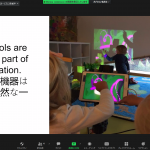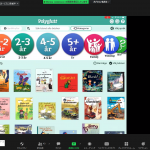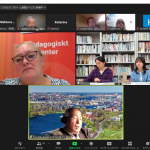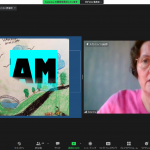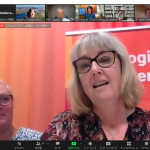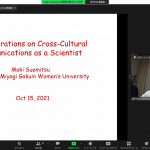2021年、10月15日(金)、2021日本―スウェーデン 国際シンポジウム <地域子ども学>と持続可能性の視点(2021 Japan-Sweden International Symposium)を開催しました。
本日、国際シンポジウムを開催し、テーマ「多言語環境の子どもたち(Multilingual children)」をテーマに、スウェーデン社会研究所、スウェーデン交流センターをはじめ、学内外の多くの関係者にご参加頂きました。
基調講演のモニカ・アンダーソン先生(スウェーデン ヘルシンボリ市教育センター)は、移民の家族が多いスウェーデンで、スウェーデン語を母国語としない子どもたちに、スウェーデン語の教育を実践されてきた就学前教育の先生です。
教育のデジタル化が進んだスウェーデンの就学前教育では、スウェーデン語の獲得を重視し、デジタル絵本(Polyglutt)が使われ始めていることも報告されました。デジタル絵本は新しい取り組みのようですが、基本となるのは「大きな声で絵本を読む」という絵本の読み聞かせの保育技術です。子どもたちが想像したり、考えたりすることの刺激になるというのはうなずけます。
また、絵本教材は「書き言葉、ナレーションと絵の組み合わせ」が言葉の学習を助けることが説明されました。スウェーデンでは、40か国語に対応した2500冊のデジタル絵本が用意されていること、それらが就学前教育で活用されていることに驚きました。
こうした実践について、就学前教育の目指すべき姿(ビジョン)が明確で、エビデンスに基づいて行われていることもヘルシンポリ教育センターから見習うべき点です。
パート2では、川崎一彦先生にファシリテーターを移し、スウェーデンの理科教育のカタリーナ先生からSTEAM教育、水の循環実験が紹介されました。そこでは、移民の子どもたちが水の循環の仕組みを協力して再現している様子が取り上げられました。
その後の意見交換会では、モニカ先生を囲んで、本学の末光学長、本学学生からの質問も紹介されました。カリーナ先生から、「民主主義」の教育の重要性が指摘され、子どもたちの発言の機会を大切にしていることが述べられました。
今回の国際シンポジウムの開催を通して、2030年に向けたSDGsの開発目標「質の高い教育をみんなに」の一助になればと思います。
(文責:西浦和樹)
Friday, October 15, 2021
2021 Japan-Sweden International Symposium <Regional Children’s Studies> and Sustainability Perspective (2021 Japan-Sweden International Symposium) was held.
Today, we held an international symposium, with the theme of “Multilingual children”. So many participants came from inside and outside the university, including the Swedish Institute of Social Studies and the Swedish Exchange Center.
Keynote speaker, Monica Andersson (she belongs to the Helsingborg Education Center in Sweden) said that in Sweden, where there are many immigrant families, preschool education has been practiced for non-Swedish children.
It was also reported that digital picture books (Polyglutt) are beginning to be used in preschool education in Sweden, where education has become more digital, with an emphasis on acquiring Swedish. Digital picture books seem to be a new initiative, but the basis is the childcare technology for story-telling of picture books, which is to read the picture books in a loud voice. It’s no wonder that it stimulates children to imagine and think.
In addition, it was explained that “written words, a combination of narration and pictures” helps the learning of words in the picture book teaching materials. I was surprised that Sweden has 2500 digital picture books in 40 languages and that they are used in preschool education.
It is also important to learn from the Helsinki Center for Education that the vision of preschool education is clear and evidence-based for these practices.
In Part 2, the facilitator was transferred to Dr. Kazuhiko Kawasaki, and Dr. Katarina Stenman (Ersängsskolan, Umeå) of Swedish science education introduced a water circulation experiment. It featured how immigrant children collaborated to recreate the mechanism of water circulation.
At the discussion meeting that followed, Monica had some questions from the President Suemitsu, the students, and participants. Monica’s colleague, Carina pointed out the importance of “democracy” education and stated that she values the opportunities for children to speak.
By holding this international symposium, I hope to promote the development goal of the SDGs for 2030, “Providing quality education to everyone.”
(Critical responsibility: Kazuki Nishiura)


